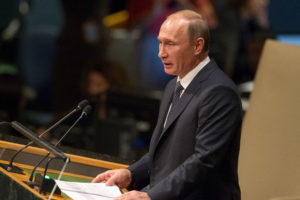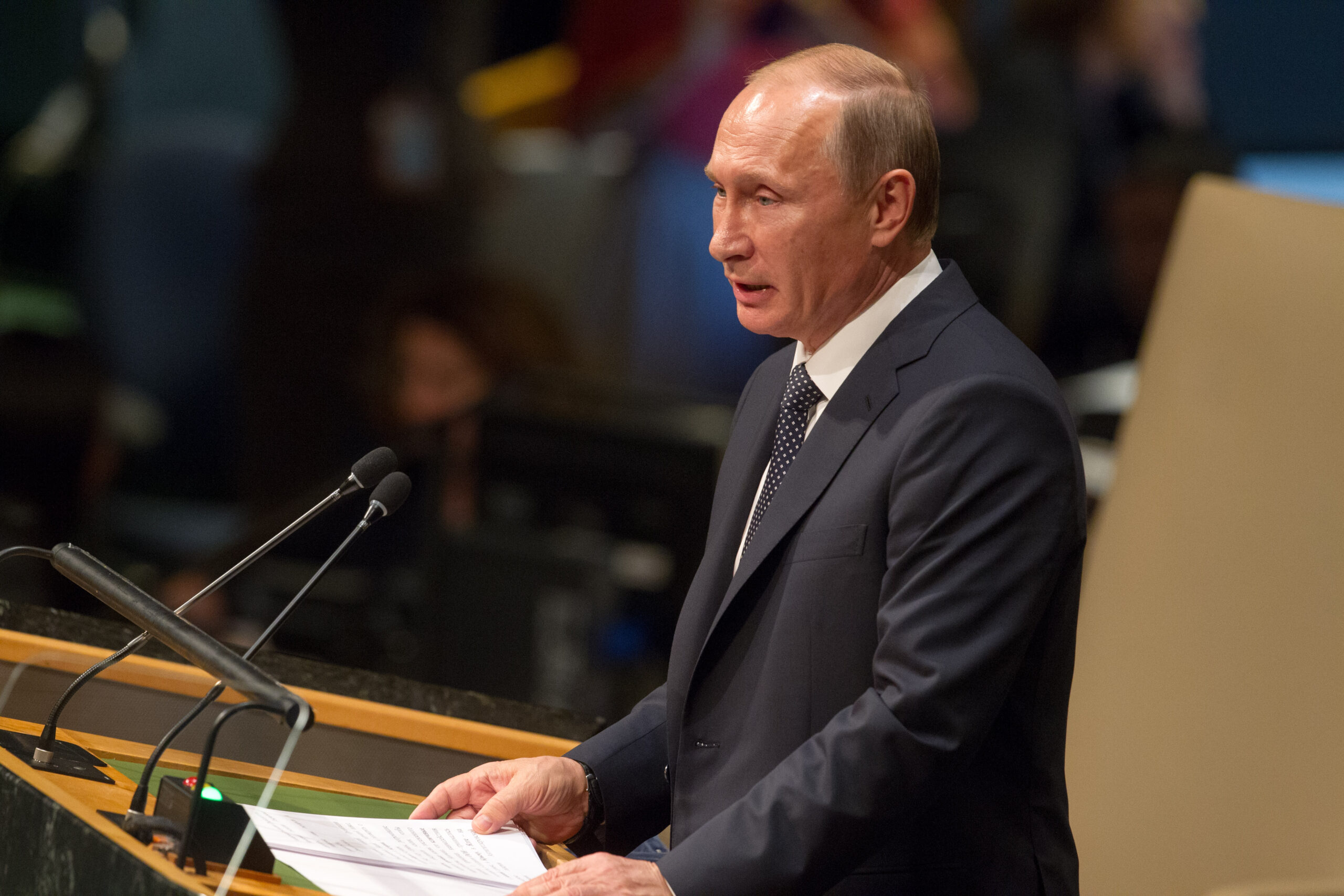On Christmas Eve in 1979, the Soviet military launched an invasion of Afghanistan to extend its sphere of influence and control along the USSR’s southern borders (which are now the nation states of Uzbekistan and Kazakhstan).
On Christmas Eve in 1991, my husband and I sat with my Mom in our childhood home in Manchester-by-the-Sea and watched the Russian hammer and sickle flag lowered and the Russian tri-color raised over the Russian Parliament.
This symbolic event marked the end of seventy-four years of communist rule over the Soviet empire and the beginning of something new for the Russian Federation and the Russian people.
Here we are, Christmas present, thirty years later. Russian President Vladimir Putin has been executing a gradual military force build-up on Russia’s border with Ukraine. United States intelligence officials started tracking Russian military deployments toward the border last February-March.
Will he or won’t he order another invasion of Ukraine?
Spheres of influence, spheres of control
Defining spheres of influence and establishing spheres of control are at the core of Russian national security policy and military strategy.
Whatever happens between Russia and Ukraine in the coming days, weeks or months, it’s going to come down to this: Putin’s calculation of the existential threats to his own power and Russia’s influence on the world stage.
Through all historical periods and under all political leaders – from the tsars and tsarinas to Lenin to Stalin, Krushchev to Andropov, Yeltsin to Putin – Russia has sought to secure itself against invasions.
That’s been true ever since the Vikings established the Rus Land in modern-day Kyiv (Ukraine) in 800 A.D. It was true four hundred years later, when the Mongol Hordes swept from the Far Eastern steppes across Siberia into the Rus region, destroying and occupying cities in Russia and Ukraine.
It was true in the 1800s, when Napoleon was Emperor of France, and before World War II, when Hitler’s Reich signed a nonaggression pact with the USSR, and during the Cold War that followed the Allied victory.
And it’s true now.
Putin has spent his life fighting perceived and actual threats to his nation:
- Groomed as a Soviet foreign intelligence operative in the Soviet KGB (Committee for State Security), now known as the Russian FSB (Federal Security Service)
- Stationed in the KGB offices in East Germany when former Soviet President Mikhail Gorbachev ended the Soviet Union’s alliance with the Warsaw Pact and withdrew Soviet forces out of the East European countries
- Witness to the wave of protests leading to the collapse of East European communist regimes across Eastern Europe and the November 1989 fall of the Berlin Wall, the final physical and psychological barrier protecting the Soviet Union’s western borders from a U.S.-NATO attack
- Still stationed in Eastern Europe on Christmas Eve, 1989, when the brutal Romanian dictator Nicolae Ceausescu and his wife were executed by firing squad in Bucharest
The collapse of the Soviet empire and the loss of border protections on its western flanks infuriated Putin.
Ever since assuming the reins of power from Russian President Boris Yeltsin on December 31st, 1999, Putin has held one goal: restore Russia as a great power, one to be feared and respected on the world stage.
Putin on edge
December days in Russia are cold, dark, short, and snowy.
Putin enters 2022 still in power after twenty-two years, still waging wars against his enemies, both foreign and domestic.
Poisoning adversaries, marshaling troops, orchestrating disinformation campaigns and authorizing cyber attacks: Putin wields power through espionage, cyber attacks, and the threat and actual use of military force.
Meanwhile, Russia’s population shrinks. The pandemic rages throughout the country. Russia’s Arctic regions are melting. Siberian forests are on fire.
Putin throws down the gauntlet to warn against NATO expansion.
He poisons and jails domestic critics.
He declares – as if saying it makes it true – that Ukraine and the other former Soviet Republics are in Russia’s sphere of influence in perpetuity.
But regardless of which countries are members of NATO, there are no defenses or border protections against the ravages of global pandemics, climate disasters, and waves of human refugees fleeing civil wars and persecutions by brutal dictators.
If Putin invades Ukraine again, an invasion will not reverse these forces of disruption and destabilization at work inside Russia’s own borders.
Thirty years from now

Power politics work differently in the twenty-first century than they did during the Cold War.
Leaders no longer control the forces wreaking havoc inside national borders.
Leaders no longer can use weapons of war to protect their people against the kinds of invasions that are happening every single moment: disease, climatic destruction, and economic hardship borne by those who have no power.
Putin is on the edge. His sphere of influence is diminishing. His sphere of control is contracting. Will he lash out against Ukraine to teach the United States and European nations a lesson? Will he simply sustain the threat of using military force, just as he’s been doing for most of 2021? Or will he conclude that a frontal assault on Ukraine will backfire on his own political future?
As Putin ponders his choices, Americans and Europeans need to regroup and reflect. A reflexive and reactive resort to tit-for-tat military force may just escalate the risks. The Cold War alliance model is not working.
We need a new model or models to protect regional security and stability from authoritarian regimes like Putin’s.
Putin is on edge because his sphere of influence and sphere of control are overwhelmed by threats that know no borders.
The world is on edge because 7.9 billion people have been under assault from a pandemic for two years and reeling from climate damage for decades.
Nuclear weapons and threats of nuclear war hang over our collective heads like a monster from a post-nuclear holocaust while people on every continent are suffering from other kinds of holocausts every day.
Putin perceives threats to his power through the prism of a former KGB operative.
Whatever his next move, the people who have power and influence in the United States, Europe, Asia, the Middle East, Africa, Latin America, and South America need to think three moves beyond Putin.
How we shape policy to advance a more stable, secure future for our people is on the line right now. It is the right time to re-evaluate and evolve the security structures and relationships designed during the Cold War.
Our spheres of control are inherently constrained and unpredictable.
But our spheres of influence are more agile and adaptable to contend with diverse threats and protect people regardless of where they live.
If Putin is on the edge, then what’s our move?
Putin looks around and sees new leaders and political turmoil in the United States, Germany, and Japan, with British Prime Minister Boris Johnson’s government seemingly on the ropes. Maybe Putin perceives an opportunity to exploit the disruptions associated with these leadership transitions.
Now is the time to show how democratic governments expand our spheres of influence. These are the deep, dark days of December, but a new year with new promise is within reach. Can we give Putin a reason to step back from the edge?


Comments are closed.